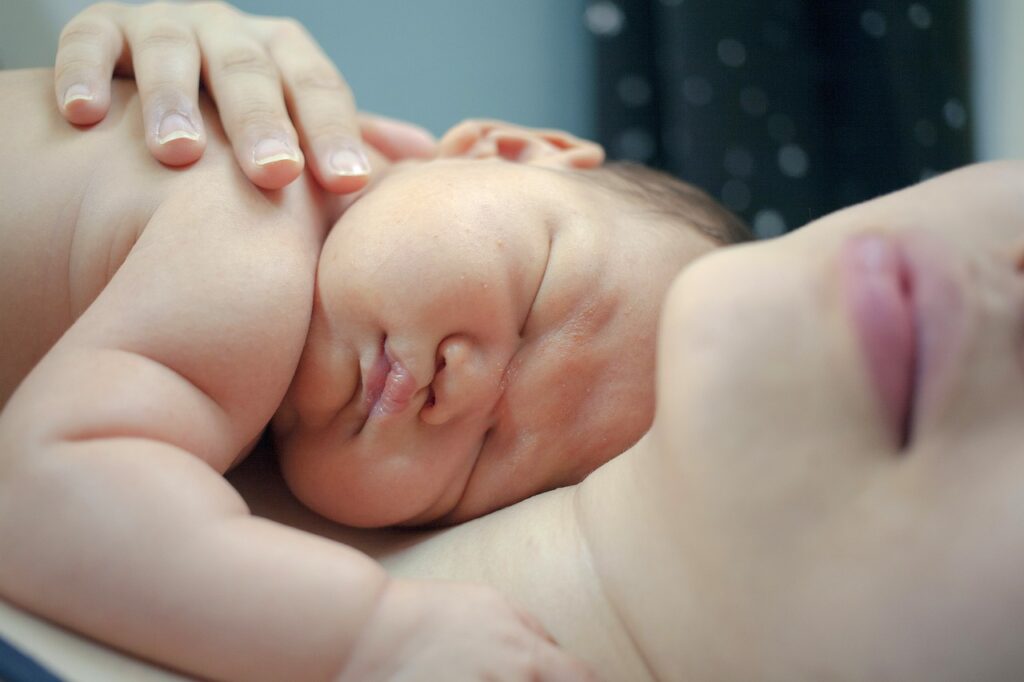Post childbirth (postpartum) joint pain, often called as postpartum joint pain, is a common condition faced by a lot of new mothers. It usually happens as a result of hormonal, physical and lifestyle changes after delivery. It can impact multiple joints but most often affects the wrists, knees, hips and lower back.Dealing with Joint Pain After Childbirth: All you Need to KnowManaging Discovery of joint pain after child start is a requirement to revive comfort and also portability.
New moms can keep joint pain after childbirth at bay with a mix of self-care, physical therapy, and medication, if needed. Key strategies include:
Balance Between Rest and Activity:
Resting the involved joints, while not overdoing activity. Gentle activity like walking can preserve mobility without stressing the joints too much.
Correct Posture:
This can provide equal stress on joints, especially if you are breastfeeding or carrying your baby use proper posture while doing so.
Physical Therapy:
A physical therapist can teach exercises to improve strength and flexibility
Pain Management:
Over-the-counter pain-treaters like ibuprofen can help address inflammation and discomfort. But be sure to consult a doctor before taking anything, especially if breastfeeding.
Joint Pain After Child Birth Causes:
Joint pain after childbirth can be caused due to various factors. These can be hormonal changes, physical changes, and the challenges of caring for a newborn.
Hormonal Changes:
The body produces the hormone relaxin while pregnant, which helps prepare the body for childbirth by loosening the ligaments and joints.
In the postpartum period, relaxin levels decline and can result in stiff or sore joints as the body returns to a pre-pregnancy state.
More Weight and Pressure:
The extra weight the body carries during pregnancy exacerbates the pressure placed on the joints, especially in the lower body including the hips, knees and the lower back.
After giving birth the body tries to get back to its weight and you often can feel off or still experience joint pain adjustments to the change.

Postpartum Body Changes:
Post-delivery, the body goes through numerous changes with regards to posture, muscle strength and alignment. These changes can lead to joint pain, particularly in the back and hips.
Exercise following childbirth:
The physical demands of tending to a new baby lifting and carrying, bending and crouching can also intensify joint pain. Many mothers are likely more active than they were in the past and may be overusing certain joints without even realizing it.
Medications and Treatments:
Treatment for joint pain after childbirth will depend on the severity of the pain and the health status of the mother. Some possible treatment options include:
Pain Relievers:
You can take over-the-counter pain relievers like acetaminophen (Tylenol) or ibuprofen (Advil, Motrin) — to help reduce inflammation and relieve pain. But it’s important to talk to your doctor about which medication is safest, especially if you’re breastfeeding.
Physical Therapy:
For the people who have chronic pain in their joints physical therapy is useful. Physical therapy can also guide new mothers through mobility exercises and stretching routines that can alleviate joint discomfort and improve mobility.
Heat and Cold Therapy:
Cold compress helps decrease inflammation in the joints, while heat packs can improve blood circulation and relax muscles. Switching back and forth between the two may offer some relief.
Supportive Braces or Splints:
Using a brace or a splint on sore joints.
like the wrist or knee can provide support and minimise stress while performing tasks.
When to See a Doctor:
If joint pain after giving birth lasts over a few weeks or if it worsens over time, a doctor should be consulted. In some instances, joint pain can indicate an underlying condition, like postpartum arthritis, that needs medical attention.
Additionally if there is any evidence of infection marked swelling or abnormal deformation of the joint a healthcare provider should be contacted immediately.
Outlook:
Post-natal joint pain is normally transient and improves as the body readjusts to its pre-pregnant state. The pain often subsides notably for many women within a few months. But in some cases, it could take longer for the joints to completely recover.
With proper self-care pain management techniques and physical treatment most women can look to have their symptoms decrease and return to regular everyday lifestyle.
The pain may last longer or worsen in some rare instances, and additional medical care may be needed.
FAQs:
How long does joint pain after childbirth last?
The length of time a woman has joint pain is different from woman to woman. For most, it passes in a few months, as the body recovers and hormone levels normalize.
However it can sometimes last longer for some people particularly if there are other contributory factors such as previous problems with a joint.
Is it safe to take pain medication when breastfeeding?
Over-the-counter pain relievers, such as ibuprofen and acetaminophen, are generally safe for breastfeeding mothers. But the best course of action is to speak with a doctor before taking any medication to make sure it’s safe for the baby.
Summary:
Joint pain after giving birth is a common and mostly temporary condition that results from hormonal changes physical strain and the demands of caring for a newborn. Although the pain can be annoying, it is usually controlled with medication, rest, correct postures and physiotherapy. Most women get better within a few months, but if the pain continues or worsens, it’s important to see a health care provider. With the proper post-partam care, new mothers can find ease.

